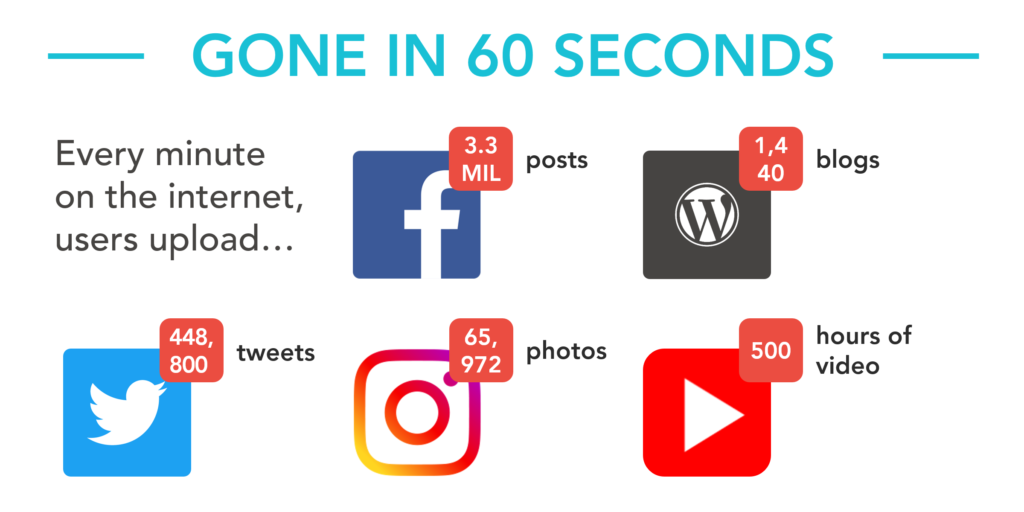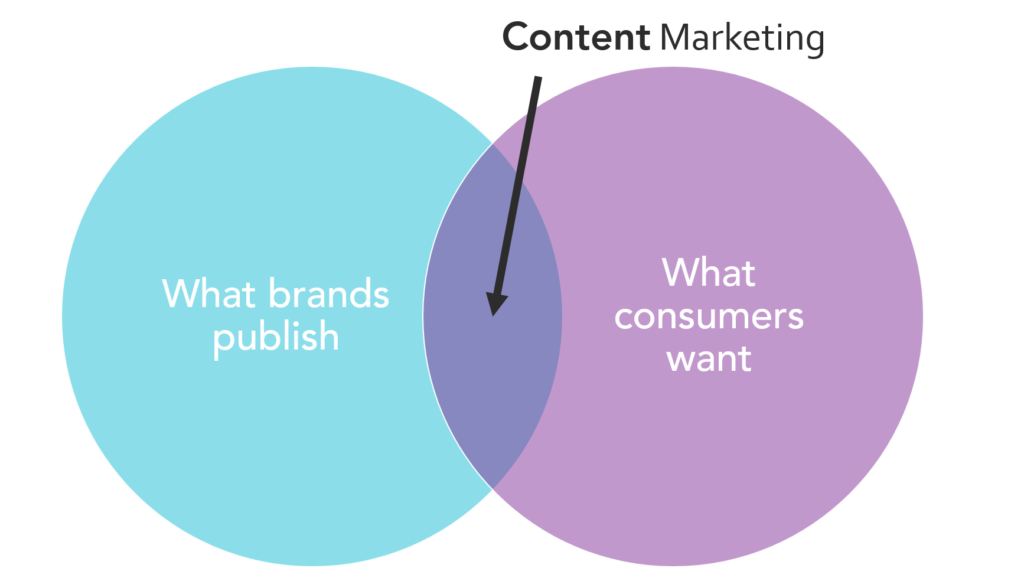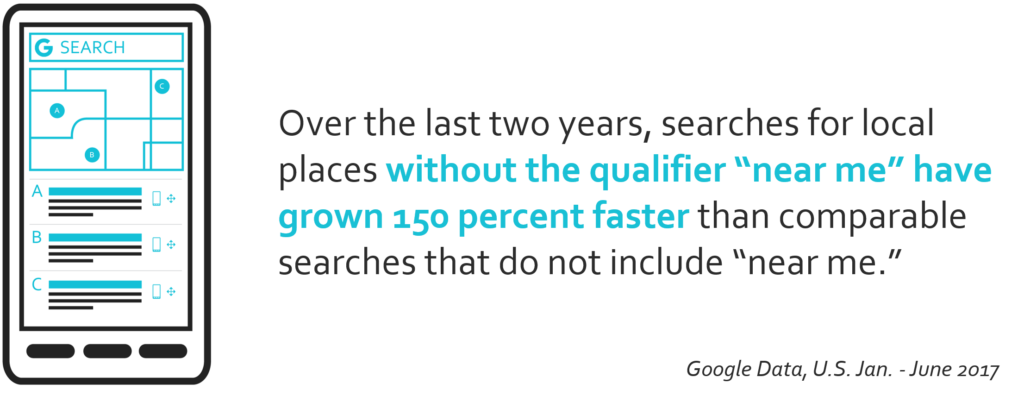The 7 questions every marketer should know the answer to before launching a Content Marketing campaign.
This post is the first in our Content Marketing 101 series. Make sure to subscribe to our blog for regular updates on this series.
Eric Schmidt, the former CEO of Google and soon-to-be former Executive Chairman of Alphabet, once said: “the internet is the first thing that humanity has built that humanity doesn’t understand, the largest experiment in anarchy that we have ever had.”
An “experiment in anarchy” may seem like a brazen way to describe the internet, but Schmidt knows what he’s talking about. He’s spent the better part of the last two decades helping run a company whose mission is “to organize the world’s information and make it universally accessible and useful.”
Consider these unruly numbers: there are more than 3.5 billion internet users around the world. Every minute, on average, these users publish 1,440 blog posts, share 3.3 million pieces of content on Facebook, upload 500 hours of video on YouTube, send 448,000 new tweets on Twitter and post almost 65,972 new photos on Instagram.

That’s a lot of information for Google to organize.
And, for brands looking to reach internet audiences, that’s a lot of noise to compete with. Breaking through the clutter of that anarchy requires messages that really resonate with audiences.
Enter Content Marketing.
Content Marketing is a popular strategy for brands to connect with target audiences and guide those consumers through their buying journeys. According to the Content Marketing Institute, 86 percent of B2C brands use Content Marketing. However, despite Content Marketing’s growing popularity, there’s a lot of misunderstanding around what it is… and what it’s not.
To define Content Marketing and provide some context for how you can leverage this practice for your brand, here are the answers to some commonly asked questions.
No. 1: What is content marketing?
Like a lot of marketing solutions, Content Marketing is constantly evolving making it tough to pin down a set definition. For now, let’s use the standard definition from the Content Marketing Institute:
“Content marketing is a strategic marketing approach focused on creating and distributing valuable, relevant and consistent content to attract and retain a clearly defined audience – and, ultimately, to drive profitable customer action.”
Let’s unpack that definition a bit to help us differentiate Content Marketing from content creation. A lot of brands create content and some might even consider what they’re doing to be Content Marketing. But, Content Marketing involves a lot more than writing a few blogs each month and sending out a few tweets. It’s a process that involves developing a cohesive strategy, implementing a process to create and publish content, promoting content across media channels and monitoring the performance of that content.
Another key part of that definition is to “drive profitable customer action.” This is also a significant difference between Content Marketing and content creation. Content Marketing implies that the content is created to help brands achieve business goals.
To inspire profitable consumer actions, brands need to create content that resonates with audiences at a deeper level. Here’s how Rob Candelino, General Manager and Vice President of Marketing at Unilever, summed up how he approaches creating content that resonates with target audiences in an interview with eMarketer:
“The principle rule we follow is that content has to be powerful and emotionally led. It has to strike both the head and the heart in a simple, crisp, succinct way.”
Effective content that connects with target audiences at a deeper level doesn’t just happen. It requires a comprehensive Content Marketing strategy.
No. 2: How can a Content Marketing strategy help develop effective content?
There’s plenty of tools and templates to help you plan and track your Content Marketing efforts. But, even with all that planning, developing that content can be the toughest step. That’s why you need to start your Content Marketing campaigns by understanding your brand’s unique value, business goals and target audiences.
To get to know your target audiences, start by building buyer personas – generalized representations of your ideal customers. Buyer personas help you understand consumers needs and wants, the challenges they face at each stage of the buying journey and the content you need to provide to help guide them through the journey. To help you get this process started, complete our Buyer Persona Template.
Armed with that information, all you need to do is connect the dots by sharing your brand’s story – why you do what you do, how you help your customers and what you offer – in a way that resonates with the right audiences at the right times. To tell your brand’s story effectively, make sure to leverage these foundational storytelling elements:
- Characters – Get to know your ideal customers so you can use them as the main characters in your Content Marketing campaigns. It’s important to get to know these audiences and focus stories around their needs, wants and problems.
- Conflict – Conflict is essential to any great story. Understand the challenges faced by your ideal customers at each stage of the buying journey and incorporate those conflicts into your Content Marketing campaigns.
- Resolution –The resolution should bring everything together by showing how your products and services solve the conflict faced by the characters in your story. It’s also important to give audiences a powerful call to action.
No. 3: Is Content Marketing the same as advertising?
Not exactly. Content Marketing is like advertising in that it’s messaging designed to promote your brand, product or service. But, with Content Marketing, the goal is to do this in a way that’s not overtly trying to sell people. Content Marketing focuses more on addressing consumer needs than promoting product features.

A subtler approach can be effective as consumers face an onslaught of ads every day. Some studies say the average number of branded messages consumers see every day could be as high as 10,000 ads. There’s no way anyone can consume 10,000 messages a day and preserve their sanity so audiences have developed a screening process to block out most ads. The messages that stick tend to be the ones that address specific consumers’ needs and wants.
No. 4: Is Content Marketing the same as Inbound Marketing?
Nope, they’re close but they’re two different strategies. In fact, Content Marketing is a type of Inbound Marketing. Think of Inbound Marketing as a superset of marketing strategies that also includes search engine optimization (SEO), web design, email marketing, social media and lead nurturing.
No. 5: What’s the difference between Content Marketing and SEO?
SEO is a set of rules and tactics you can apply to your website to make it easier for search engines to crawl, read and index as many pages as possible from your website while also making your site easy for users to navigate and understand.
Content Marketing and SEO have a lot of common goals like improving your site’s rankings for relevant search terms, improving the quantity and quality of website traffic and increasing the number conversions from your site. The two also work very well together – Content Marketing can support SEO efforts by providing the content necessary to populate webpages, SEO can support Content Marketing by optimizing content to rank better on search engine result pages (SERPs).
No. 6: OK, how about Native Advertising?
These two practices are also similar and brands can even turn their Content Marketing pieces into native ads. Like Content Marketing, Native Advertising content doesn’t normally promote a product or service directly. Usually, they both focus on creating related content that’s informative and entertaining to target audiences. What makes Native Advertising different though, is it follows a “pay to play” model where brands buy space to publish content on external media platforms. The paid promotion allows brands to serve native ads to targeted audience groups on major media sites.
Here’s how it works: brands pay a platform like Outbrain to distribute content pieces across their network of publishers. These content pieces are usually featured below articles that are relevant to the advertising brands’ products and services and can be bought with direct media buys or via programmatic technologies. Depending on the publisher site, the pieces are earmarked with labels like “sponsored stories” to let readers know it’s advertising content.
No. 7: What types of content does Content Marketing include?
There’s no shortage of content types that fall under the umbrella of Content Marketing. Really, content is anything that can be published online or print including:
- Website content/microsite content
- Blog/blog posts
- Social media posts
- Infographics
- E-books/white papers/research reports
- Case studies
- Email newsletters
- Online presentations (SlideShare)
- Webinars
- Video/streaming video
- Podcasts
- Branding guides
- Documentaries
- Interactive content
- Digital and print publications
Wrapping it all up
Content Marketing is an amazing tool for brands looking to rise above the clutter of internet ads and connect with target audiences on a more personal level. It’s important to remember that Content Marketing is a lot more than just writing blogs or website content; it’s a holistic process that encompasses all the steps necessary to produce effective content that inspires your target consumers to take action.
![]()
If you’re interested in implementing or improving your brand’s Content Marketing strategy, make sure to subscribe to our blog for regular updates.





![[2017 Recap] Top 10 Digital Marketing and Advertising Trends for Local Brands](https://mindstreammediagroup.com/wp-content/uploads/2017/12/Display-infographic-featured-image.png)

 What this means for local advertisers:
What this means for local advertisers:
 Source:
Source: 


